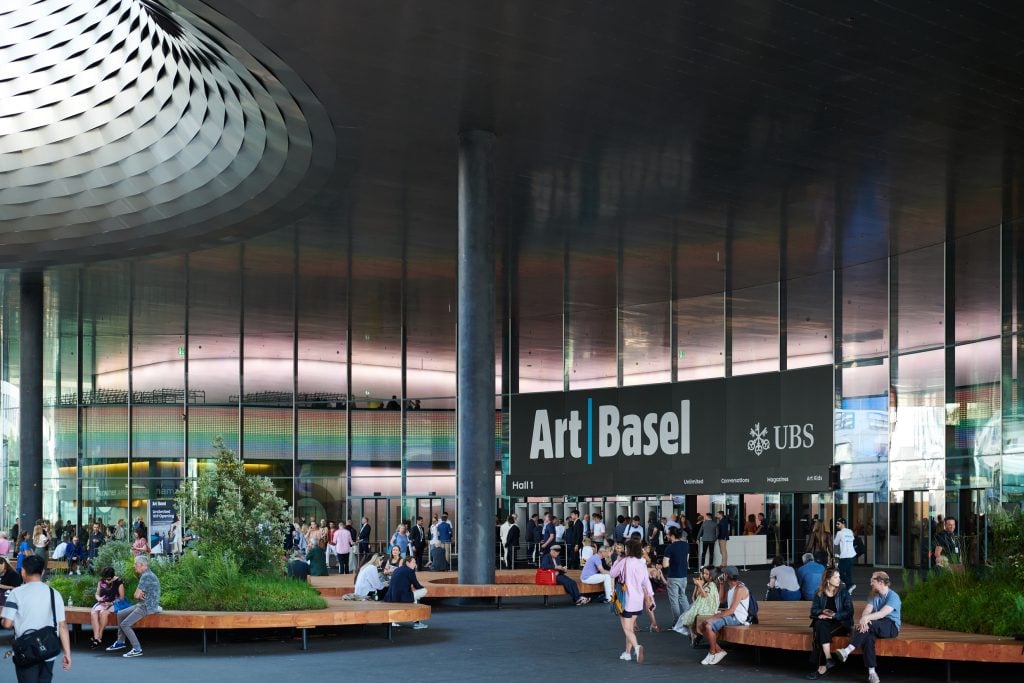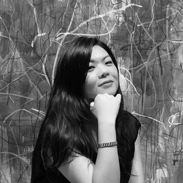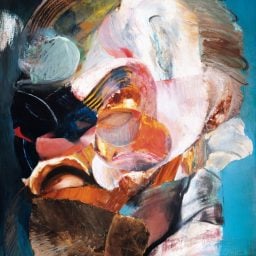Collector Timothy Tan was spotted sitting at the courtyard inside Messe Basel while waiting to hear from a gallery about a painting he was interested in. It was in the middle of Art Basel, when much of the international art world finally reconvened after the pandemic, and the marquee Swiss fair had returned to its usual mid-June slot. To many, the buzzing fairground felt like a certain restoration of normalcy in Europe, but to the 46-year-old Manila-based collector, it was a new experience: this was his first Art Basel in Switzerland, and he loved it.
“Everyone is really excited after two years of pandemic, getting together again at an art fair,” said the Filipino businessman, who imports Italian designer furniture. “The quality of the works is really high, like that Joan Mitchell painting. You can’t see that anywhere.”
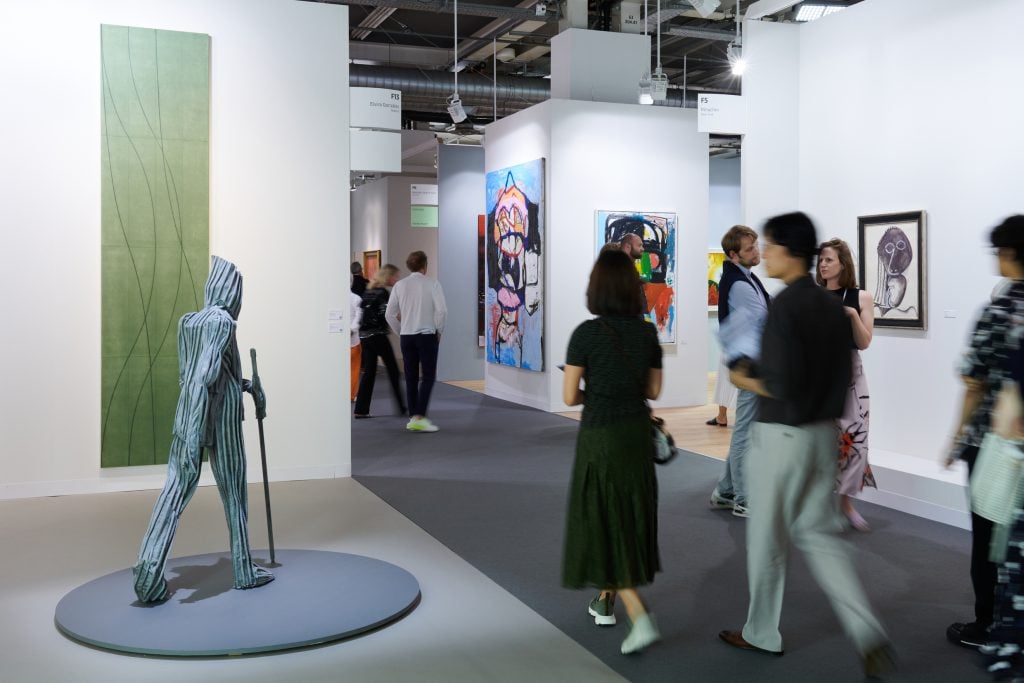
Art Basel 2022. Courtesy Art Basel.
Tan has been collecting art for a decade, starting with art closer to his roots in Southeast Asia. But he began adding international art to his growing collection around three years ago. He has traveled to fairs in Asia, including Art Basel Hong Kong, and events in Shanghai and Taipei. But as many of these places remain inaccessible to the international art community due to ongoing travel restrictions, he began a new adventure: first Art Basel Miami Beach in December, and then Art Basel in Switzerland this month. He had already planned to return next year before even leaving this edition. “Art Basel is part of my life now,” the cheerful Tan said.
Traveling was still out of the question when the last edition of Art Basel was held in September. Now, Asian collectors were back—but the crowd reflected a mix of geopolitical forces and market trend lines. While mainland Chinese collectors were the main demographic around five years ago, this year a variety of languages were spoken in the aisles: Most often heard was Korean, followed by a mix of English, Cantonese, and Japanese. Mandarin was there, too, but not as dominant as it was before.
A Changing Mix of Asian Collectors
Art Basel did not provide specific attendance numbers for VIPs, but confirmed a significant presence from the Asia-Pacific region, “with a particularly strong representation of collectors from Korea, Japan, and India among top top buyers,” according to an Art Basel spokesperson.
Dealers and art advisors who were at the fair last week shared a similar observation. But the biggest takeaway was that the changing mix of Asian crowds at the mega-fair mirrored a shift of the Asian art market dynamics in the post-Covid era. With Hong Kong and mainland China remaining out of reach, Asia is becoming more fragmented. Other markets in the region are on the rise, with the spotlight falling on South Korea, paving the way for the highly anticipated inaugural edition of Frieze Seoul in September.
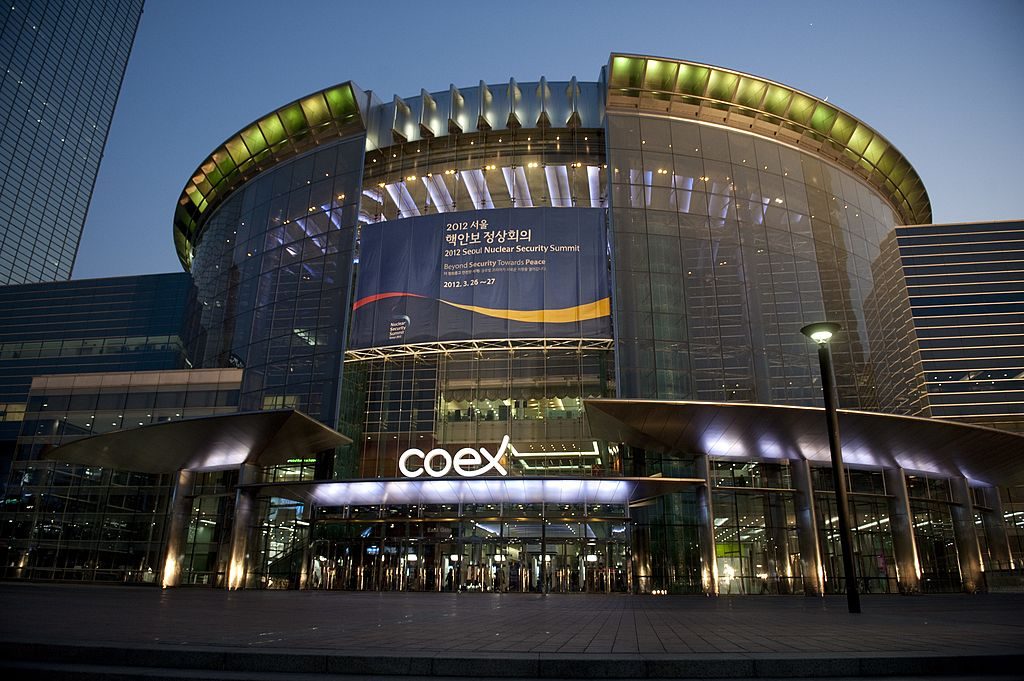
The exterior of the COEX Center in Seoul, where Frieze will take place this September. Photo: Saul Loeb/AFP via Getty Images.
Jiyoon Lee, founder and director of SUUM Curating Project, observed that the 2022 edition of Art Basel saw the highest number of Korean collectors she has seen over the past 15 years. This was more than just a result of relaxed travel restrictions, she noted. Art collecting in South Korea has matured, and collectors are after a vast range of artists, from Donald Judd to KAWS, as well as many other international big names, such as David Hockney, Danh Vo, and Miriam Cahn. “In the last 10 years, we have had great development in tastes,” she said.
Lee, the former director of the National Museum of Modern and Contemporary Art (MMCA) Seoul branch, said that the Korean art ecosystem experienced transformative growth over the past 15 years. This is in part due to the country’s strong public and private museums, as well as galleries and auction houses. The lifting of import tax for artworks also encouraged Korean collectors to purchase art.
“There is a strong presence of young collectors,” Lee added, “and those from the new MZ generation [Millennials, born 1981–1995, and Generation Z, born 1996–2005] have new tastes that are different from previous generations, with a self-made independent perspective.”
The Seoul-based Kukje Gallery, which brought a stellar line-up of works by Korean and international artists to Art Basel, said that it encountered a lot of familiar Korean faces.
“The recent boom of the Korean art market, attributed to the rise of younger generations of collectors, has led to an unprecedented level of interest in art from both clients and the general public,” said the gallery’s VP Bo Young Song.

Atsuko Ninagawa, cofounder and director of Art Week Tokyo and owner and director of Take Ninagawa, at an event promoting the upcoming edition of Art Week Tokyo during the Basel week. Courtesy of Art Week Tokyo.
Collectors from Southeast Asia, including Tan himself, were also a significant presence. There were collectors from not just the Philippines but also Singapore, Indonesia, and Thailand. An entourage of well-dressed visitors, who were patrons and friends of the Singapore Art Museum, was seen touring institutions in Basel.
Atsuko Ninagawa, owner and director of Tokyo-based gallery Take Ninagawa, said she was pleasantly surprised by the strong sales to not just European collectors but also Japanese collectors traveling to the fair. She was also pleased to see an uptick not only in Asian collectors attending, but also representatives of institutions.
Where Were the Chinese Collectors?
Collectors from Hong Kong and mainland China were among the top 10 regions represented at the fair based on VIPs in attendance, according to Art Basel. But travel posed a challenge due to the ongoing zero-Covid policy in China. While those traveling from Hong Kong will have to face a seven-day mandatory hotel quarantine upon return, the mainland authorities were adamant about the banning of “non-essential travels,” citing the pandemic.
Among the familiar faces from China was mega collector Qiao Zhibing, founder of the acclaimed institution Tank Shanghai. Qiao has been on a four-month research road trip, leaving his footprints at the Venice Biennale and Miart fair in Milan. Art Basel was one of his many stops before heading to Kassel for Documenta.
Despite the challenges of overseas travel, Chinese collectors still remain very active, Qiao noted. “They are still buying, though they are buying from looking at pictures on PDFs,” he said. “The pandemic has changed the way people acquire artworks and they are now used to this already.”
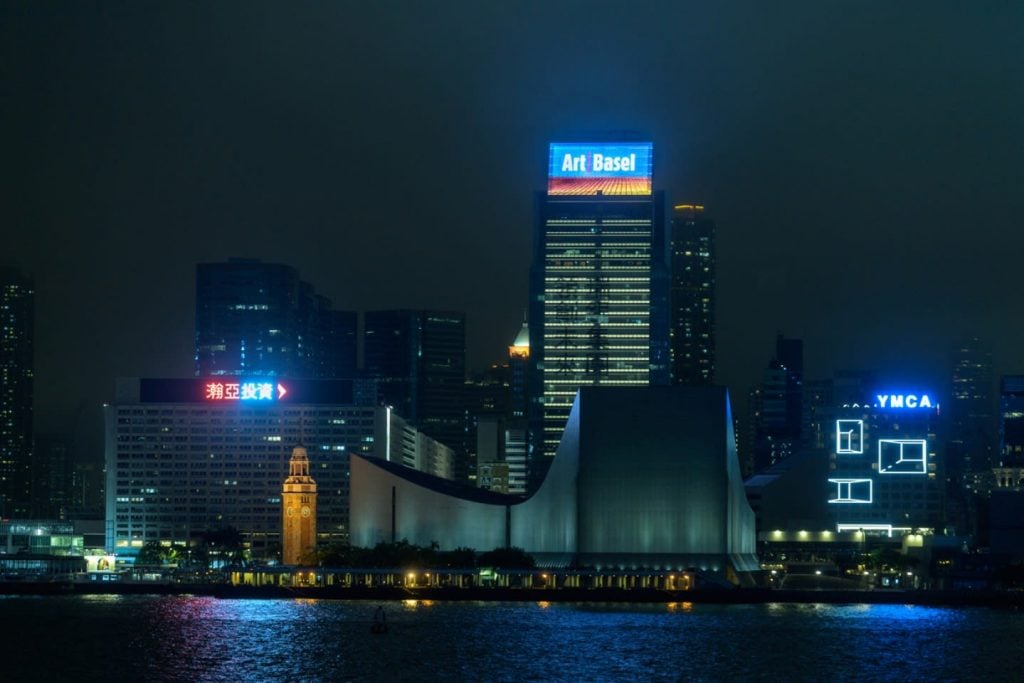
Art Basel in Hong Kong, 2022. Courtesy of Art Basel.
Changing Market Dynamics
With new art fairs and events mushrooming in Asia in addition to Frieze Seoul—such as Art Week Tokyo, an initiative co-founded by Ninagawa in collaboration with Art Basel to kick off in November; ART SG in Singapore in January; and Tokyo Gendai in July next year—there is no lack of optimism about the potential growth and diversification of the Asian market.
“Korea is very keen and confident to be the next art hub in Asia,” said Taipei-based art consultant Gladys Lin, “but there is still a major barrier if you don’t speak the Korean language. It is slightly similar to the art market in Japan.”
And with the recent cultural changes in Hong Kong brought on by political turmoil and Covid restrictions, many art-world insiders were concerned the region is likely to become more fragmented. Last month’s Art Basel Hong Kong saw more than half of the exhibitors taking part remotely, and few visitors traveled to the city just to attend the fair, unlike in the past.
If Hong Kong could maintain the autonomous, commercial role it once had, the city would still have the advantage in art transactions, Lin suggested. “There is no place like Hong Kong in terms of infrastructure and diversity in Asia,” she noted. But given the current outlook, smart buyers may become more selective in their travels, she said, and more Asian buyers are likely to attend important global art fairs over regional ones.
